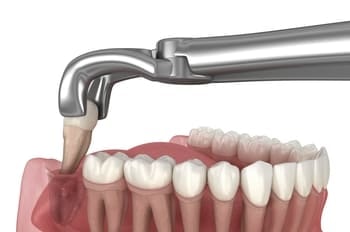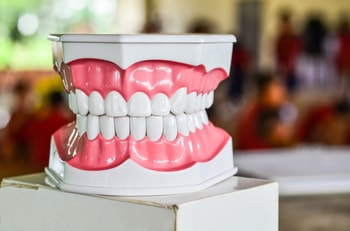Tooth infections can cause a great deal of pain and discomfort. When bacteria enter a tooth through decay or injury, it can lead to an infection in the root of the tooth, often accompanied by swelling, throbbing pain, and other symptoms. While traditional antibiotics are commonly prescribed to fight bacterial infections, many people are turning to natural remedies as an alternative or complement to conventional treatment. So, what is the strongest natural antibiotic for tooth infection?
This blog will explore some of the most effective natural antibiotics for tooth infections, why they work, how they can be used, and when to seek professional dental care with Boutique Dental Implants and Cosmetics dentist in Campbelltown, NSW for a more serious condition. We’ll focus on well-known natural remedies like tea tree oil, clove oil, and coconut oil, among others, to see how they can combat tooth infections and oral health issues.
What Causes Tooth Infections?
Tooth or dental infections occur when harmful bacteria enter the tooth and cause inflammation and damage. If not treated, these infections can cause severe pain, swelling, and even more serious complications. Understanding the different causes of tooth infections is crucial for preventing them and knowing how to address them promptly. Several factors can contribute to the development of a tooth infection, including tooth decay, gum disease, trauma, and underlying health conditions. Let’s dive deeper into each of these causes.
1. Tooth Decay (Cavities)
 One of the most common causes of a tooth infection is tooth decay or cavities. Tooth decay begins when the bacteria in the mouth break down sugars and starches left behind by food. As the bacteria feed on these substances, they produce acids that erode the tooth’s enamel, creating a hole or cavity. If left untreated, this cavity can deepen and reach the dentin (the softer tissue inside the tooth) and eventually the pulp (the innermost part containing nerves and blood vessels).
One of the most common causes of a tooth infection is tooth decay or cavities. Tooth decay begins when the bacteria in the mouth break down sugars and starches left behind by food. As the bacteria feed on these substances, they produce acids that erode the tooth’s enamel, creating a hole or cavity. If left untreated, this cavity can deepen and reach the dentin (the softer tissue inside the tooth) and eventually the pulp (the innermost part containing nerves and blood vessels).
At this point, bacteria can enter the tooth’s pulp, causing a tooth infection. As the infection progresses, it may spread beyond the pulp and affect the surrounding tissue, resulting in an abscess, a painful swelling filled with pus. Tooth infections caused by tooth decay are particularly common in individuals with poor oral hygiene or those who frequently eat sugary foods and drinks.
2. Cracked or Damaged Teeth
A cracked or damaged tooth can also lead to a tooth infection. If a tooth is cracked due to injury, a fall, or grinding (bruxism), bacteria can enter through the crack and reach the tooth’s inner tissues. Even if the crack is small, it can allow bacteria to thrive inside the tooth. This is especially true if the tooth is not properly sealed or treated, allowing bacteria to infect the pulp.
Additionally, if the tooth pulp is exposed due to a fracture, the risk of infection significantly increases. This type of tooth infection can cause intense pain, swelling, and dental abscess formation.
3. Gum Disease (Periodontal Disease)
Gum or periodontal disease is another leading cause of tooth infections. It begins with gum inflammation, often due to poor oral hygiene that leads to the buildup of plaque and tartar. Over time, plaque can harden into tartar, which irritates the gums and causes them to become inflamed and bleed. This is known as gingivitis.
If left untreated, gingivitis can progress into periodontitis, a more severe form of gum disease that affects the bones and tissues that support the teeth. As gum disease worsens, the gums recede, and pockets form around the teeth. These pockets can trap bacteria, leading to an infection of the tooth’s root or surrounding tissues. If the infection reaches the tooth’s pulp, it can result in a tooth infection.
Gum disease is a major cause of tooth infections and can increase the risk of tooth loss if not treated promptly. Regular brushing, flossing, and professional cleanings can help prevent gum disease and its complications.
4. Trauma or Injury to the Tooth
Physical trauma, such as an accident, fall, or blow to the face, can damage teeth and increase the likelihood of tooth infection. When a tooth is cracked, chipped, or fractured due to trauma, bacteria can easily enter the exposed part of the tooth and infect the pulp. Sometimes, the tooth might be knocked loose, and the exposed root can become infected.
Even if the trauma doesn’t cause a visible crack, it can still affect the internal structures of the tooth, leading to an infection. Dental infections caused by trauma can sometimes go unnoticed at first, but if left untreated, they can worsen and spread to the surrounding tissues, leading to more serious complications.
5. Failed Dental Restorations (Fillings, Crowns, etc.)
Dental restorations, such as fillings, crowns, or root canals, are designed to protect the tooth from further damage and infection. However, if these restorations fail, tooth infections can occur. For example, if a filling becomes loose or a crown falls off, bacteria can enter the tooth and cause an infection in the pulp.
Similarly, if a root canal procedure is not performed properly or if the tooth becomes re-infected, it can result in a persistent infection inside the tooth. The restoration might have protected the tooth initially. Still, over time, if bacteria find a way inside, the infection can return, leading to discomfort, tooth pain, and the formation of an abscess.
6. Poor Oral Hygiene
Poor oral hygiene is one of the most significant risk factors for developing tooth infections. Brushing and flossing regularly helps remove food particles and plaque, the building blocks for bacteria. Without proper cleaning, plaque accumulates on the teeth and gums, leading to cavities, gum disease, and eventually tooth infections.
Inadequate oral hygiene also allows bacteria to grow freely, which can lead to infection of the tooth’s pulp or surrounding tissues. People who neglect their oral health routine or do not visit the dentist regularly for professional cleanings are at a higher risk of developing dental infections.
7. Underlying Health Conditions
Certain health conditions can increase the risk of developing tooth infections. For example, people with diabetes are more susceptible to infections due to a weakened immune system. Diabetics may have a harder time fighting off the bacteria that cause tooth infections, and gum disease can progress more quickly in individuals with diabetes.
Additionally, individuals with weakened immune systems—whether due to medications, cancer treatments, or autoimmune disorders—are at higher risk of infections, including tooth infections. A weakened immune system can make it more difficult for the body to fight off oral bacteria, leading to infections in the teeth and gums.
8. Dry Mouth (Xerostomia)
Dry mouth, or xerostomia, occurs when the salivary glands do not produce enough saliva to keep the mouth moist. Saliva plays an important role in washing away food particles and neutralizing acids produced by bacteria in the mouth. Without enough saliva, bacteria can thrive in the mouth, increasing the risk of tooth infection.
Dry mouth can be caused by various factors, including certain medications, medical conditions (such as sjögren’s syndrome), or dehydration. People with dry mouth may be more prone to tooth decay, gum disease, and other oral health issues, including dental infections.
9. Tooth Sensitivity and Abscesses
Sometimes, a tooth infection can begin as a small area of sensitivity or discomfort. If left unchecked, it can develop into a more severe infection or abscess. Abscesses are collections of pus that form when bacteria invade the tooth or surrounding tissues. They can cause intense pain, swelling, and even fever, signalling a more serious infection that may require professional dental treatment.
If you notice tooth sensitivity or mild discomfort that worsens over time, it’s important to visit a dentist for evaluation and treatment before it progresses into a full-blown infection.
Natural Antibiotics for Tooth Infection
 While a tooth infection is often treated with antibiotics prescribed by a dentist or healthcare provider, some people may prefer to use natural antibiotics as a first line of defense. Natural remedies can help reduce swelling, alleviate tooth pain, kill the harmful bacteria causing the infection, and prevent the infection from worsening.
While a tooth infection is often treated with antibiotics prescribed by a dentist or healthcare provider, some people may prefer to use natural antibiotics as a first line of defense. Natural remedies can help reduce swelling, alleviate tooth pain, kill the harmful bacteria causing the infection, and prevent the infection from worsening.
Let’s explore some of the strongest natural antibiotics commonly used for treating tooth infections.
1. Tea Tree Oil
Tea tree oil is one of the most popular natural antibiotics for tooth infections. This essential oil has antibacterial and antifungal properties, effectively combating the bacteria that cause dental infections. Tea tree oil can help kill harmful bacteria, reduce swelling, and temporarily relieve the pain associated with an infected tooth.
To use tea tree oil for a tooth infection, dilute it with a carrier oil such as coconut or olive oil. A few drops of the diluted oil can be applied directly to the affected area using a cotton swab or gently massaged onto the gums. It’s important not to swallow the oil, as it can be toxic if ingested in large amounts.
Tea tree oil is especially effective when combined with other natural remedies like clove oil for an even stronger effect.
2. Clove Oil
Clove oil is another powerful natural antibiotic for tooth infections. It contains eugenol, a compound that has anti-inflammatory properties and can provide relief from tooth pain. Clove oil also has antibacterial properties, making it an excellent choice for combating the bacterial infections that cause tooth infections and gum disease.
To use clove oil, apply a few drops directly to the affected tooth or gums. You can also dilute it with a carrier oil and gently massage it into the area around the infected tooth. Be cautious with the amount of clove oil you use, as it is potent and can cause irritation if applied in large quantities.
Besides its antibacterial properties, clove oil can also act as a numbing agent, providing temporary relief from the discomfort associated with tooth infections.
3. Coconut Oil
Coconut oil is another common natural antibiotic for tooth infections due to its antibacterial and anti-inflammatory properties. It’s an effective remedy for reducing swelling and pain associated with tooth infections. Coconut oil can also help reduce oral bacteria, which can help prevent further infections.
One of the most popular ways to use coconut oil for a tooth infection is through a practice called oil pulling. Oil pulling involves swishing a tablespoon of coconut oil in your mouth for 10–15 minutes, which can help remove bacteria from the mouth and promote better oral health.
Another option is to apply a few drops of coconut oil directly to the affected tooth or gums for localized relief.
4. Garlic
Garlic is well-known for its antibacterial and antifungal properties. It has been used for centuries as a remedy for various infections, including dental infections. The compound allicin found in garlic has been shown to kill harmful bacteria, which makes it a great option for treating tooth infections naturally.
To use garlic for a tooth infection, crush a fresh garlic clove and apply it directly to the affected tooth or gum. Alternatively, mix crushed garlic with a small amount of coconut oil and apply it as a paste to the infected area. Be aware that garlic can have a strong odour, so it’s a good idea to rinse your mouth afterwards to freshen your breath.
5. Oregano Oil
Oregano oil is another powerful natural antibiotic that can help fight tooth infections. Its antibacterial and anti-inflammatory properties make it effective at combating the bacteria responsible for dental infections. Oregano oil is also known for reducing pain and swelling, making it an excellent choice for tooth pain patients.
To use oregano oil for a tooth infection, dilute it with a carrier oil like coconut oil and apply it directly to the infected area. You can also add a few drops to a glass of water and swish it around your mouth for a few minutes. Always dilute oregano oil, as it can be strong and irritating when undiluted.
6. Turmeric
Turmeric is a natural anti-inflammatory often used in herbal medicine. It contains curcumin, a compound with powerful antibacterial properties that can help reduce swelling and pain. Turmeric can be especially effective when used as a paste for tooth infections.
To use turmeric for a tooth infection, create a paste by mixing turmeric powder with a little water or coconut oil. Apply the paste directly to the infected tooth or gums. Let it sit briefly before rinsing your mouth with warm water. Turmeric’s anti-inflammatory properties can help alleviate tooth pain and speed up the healing process.
When to Seek Professional Dental Care
 While natural antibiotics for tooth infections can be very effective in relieving symptoms and helping to fight bacteria, there are certain situations where professional dental care is necessary. If you have a severe tooth infection lasting more than a few days or is accompanied by a fever, it’s important to see a dentist. Dental infections can sometimes spread to the bone, leading to serious complications if left untreated.
While natural antibiotics for tooth infections can be very effective in relieving symptoms and helping to fight bacteria, there are certain situations where professional dental care is necessary. If you have a severe tooth infection lasting more than a few days or is accompanied by a fever, it’s important to see a dentist. Dental infections can sometimes spread to the bone, leading to serious complications if left untreated.
Here are some signs that you should seek professional dental treatment:
- Persistent or worsening pain: If your tooth infection doesn’t improve or gets worse, a Canberra emergency dentist at Definitive Dental clinic can provide the necessary antibiotics for tooth infection and perform any necessary procedures to treat the infection.
- Abscess or pus: If you notice an abscess, swelling, or pus around the infected tooth, this may indicate a more serious infection that requires medical treatment.
- Difficulty breathing or swallowing: Severe infections that affect the throat or surrounding tissues can cause difficulty breathing or swallowing. If this occurs, seek emergency care immediately.
- Swelling that doesn’t subside: If the swelling doesn’t decrease after a few days of using natural antibiotics, a dentist can evaluate the infection and determine if a more intensive treatment plan is needed.
Conclusion
So, what is the strongest natural antibiotic for tooth infection? While there is no one-size-fits-all answer, natural remedies like tea tree, clove, coconut, and garlic are some of the most effective and commonly used natural antibiotics for fighting tooth infections. These remedies can help reduce swelling, ease pain, and fight bacterial infections that cause tooth pain and gum disease.
However, it’s important to remember that while these natural antibiotics can offer temporary relief, they are not a substitute for professional dental care. If you’re experiencing a severe tooth infection or your symptoms don’t improve, it’s important to seek professional dental treatment to prevent complications and ensure the infection is properly treated.
By incorporating natural antibiotics into your oral health routine and seeking timely care from a dentist in Campbelltown, NSW, you can help prevent dental infections and maintain a healthy, pain-free smile.
References
https://www.healthline.com/health/home-remedies-for-abscess-tooth
https://www.guardianlife.com/individuals-families/dental-insurance/dental-care/10-natural-remedies-tooth-infection
https://www.buzzrx.com/blog/how-to-treat-a-tooth-abscess-antibiotics–natural-remedies




